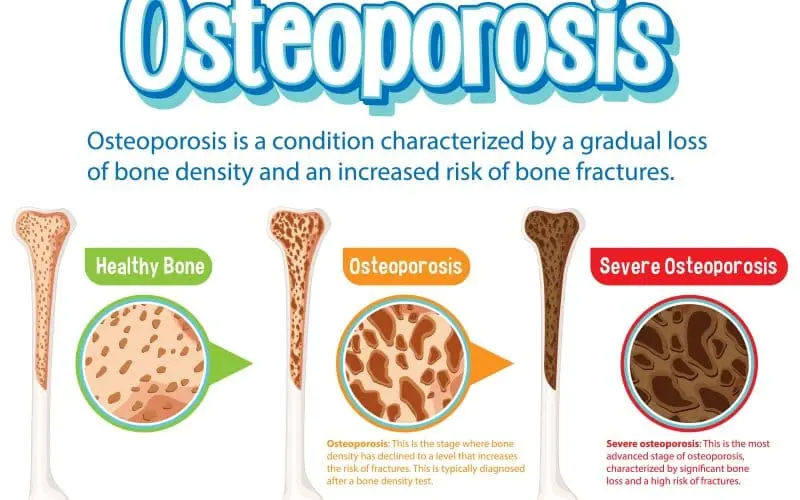Osteoporosis is a medical condition that causes fragile and weakened bones. This happens because of loss of bone mineral density, wherein the bones aren’t able to regrow. Weak bones make a person more prone to fractures. This condition often occurs in elderly individuals and reduces the quality and density of their bones, which are normally strong and dense. The symptoms of the different types of osteoporosis are not that evident. Often it is only when an individual fractures a bone because of a minor fall that osteoporosis is diagnosed.
The causes of the types of osteoporosis are many. To begin with, an inadequacy of calcium and vitamin D can lead to weak bones as calcium is the mineral for good bone health and vitamin D helps in the absorption of calcium. Hormonal changes also play a key role in maintaining bone health. Estrogen promotes the activity of cells, osteoblasts, that make bones. This is the reason why women, post menopause is at a higher risk of osteoporosis. If there’s a family history of osteoporosis, the risk of it increases. A sedentary lifestyle can also be a cause. Other factors like smoking, and consumption of excessive alcohol can also cause osteoporosis. In this blog, we will look into the classification of osteoporosis, the different types of osteoporosis, and the stages of osteoporosis.
Types of Osteoporosis
There are mainly two different types of osteoporosis, primary osteoporosis and secondary osteoporosis.
Primary Osteoporosis
In primary osteoporosis, the classification of osteoporosis is as such:
- Postmenopausal osteoporosis: This among the different types of osteoporosis, is a common one. Women, especially after the years following menopause, are at a greater risk of developing osteoporosis because the estrogen level decreases, which stunts bone growth by decreasing the activity of the cells that make bones.
- Age-related Osteoporosis: Also known as senile osteoporosis, this occurs as a natural result of old age. This is among the types of osteoporosis that don’t limit itself to a specific gender. Nutritional deficiency, lack of physical activity, etc. may cause weak bones in the elderly population.
Secondary Osteoporosis
Secondary osteoporosis is among the types of osteoporosis that have an underlying cause like a medical condition or the effect of a certain type of medication. This classification of osteoporosis does not occur due to natural aging. Medical conditions that cause secondary osteoporosis are; Gastrointestinal disorders that inhibit the absorption of nutrients essential for bone growth. There is also the malabsorption syndrome that happens in the small intestine, which also impairs the ability to absorb nutrients. Endocrine disorders like diabetes can lead to weak bones. Hyperthyroidism, hypothyroidism, PCOS, gestational diabetes, and cushing’s disease are other endocrine disorders that can cause secondary osteoporosis. Autoimmune diseases like lupus, psoriatic arthritis, etc. can also be a cause. Medications that are used to treat some conditions like seizures or even chemotherapy or hormonal treatment can affect bone health and lead to bone loss.
Osteogenesis Imperfecta
This among the types of osteoporosis is caused by a genetic defect and it is present at birth, which results in fragile bones prone to fractures. There are different types of osteogenesis imperfecta depending on the severity of the condition. Sometimes the newborn infant cannot survive osteogenesis imperfecta as it is the severe most among the stages of osteoporosis, which leads to degeneration of other body organs and leads to loss of life. While other types are common and mild, most infants have it.
Idiopathic Juvenile Osteoporosis
This classification of osteoporosis knows no cause. It is a rare condition that leads to fractures because of decreased bone density in children and adolescents. It usually occurs between the ages of 8 and 14 and in some cases, there may be a spontaneous improvement in bone density.
In Conclusion
These different types of osteoporosis can be prevented and managed by taking in adequate amounts of calcium and vitamin D, regular exercise, lifestyle changes and choices that are healthy, and proper adherence to the treatment provided by your physician.


